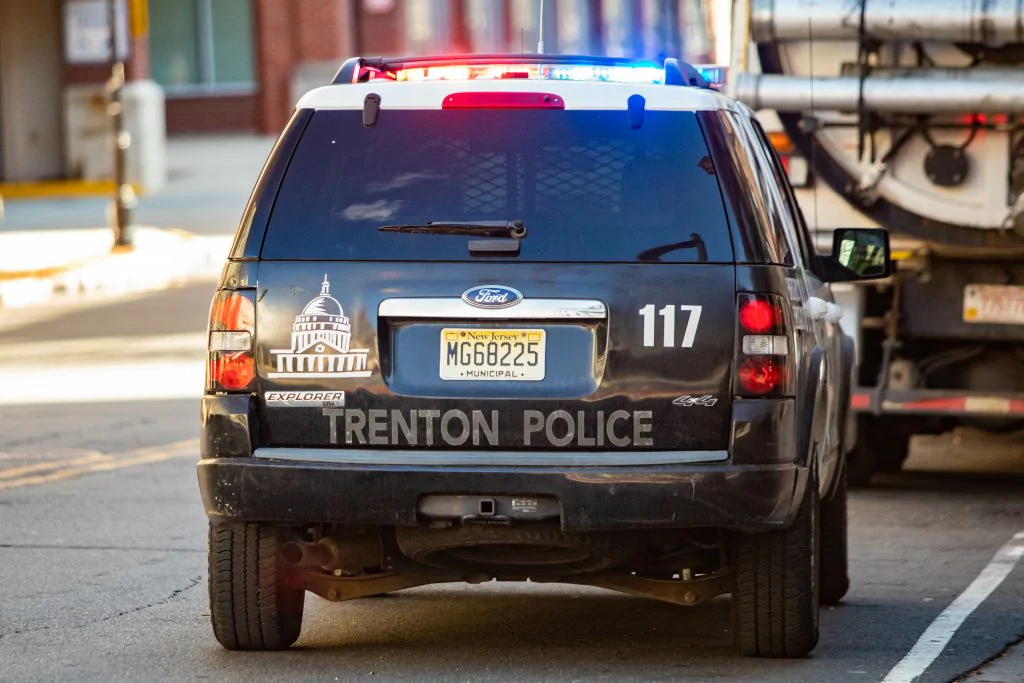The Occupational Safety & Health Administration (OSHA) is responsible for creating and enforcing safety standards across a broad variety of job fields in the US. This is especially important for jobs that can put employees in dangerous environments, such as construction and manufacturing. The law requires employers to provide employees with working conditions that are free of known dangers.
Workers are entitled to working conditions that pose no risk to serious harm. In addition, OSHA provides workers with the right to ask OSHA to inspect their workplace and get tests done to find hazards. With New York currently experiencing a construction boom, workers should know how they’re legally protected and which rules are most often violated on the jobsite.
Employer Responsibilities Enforced by OSHA
Under Occupational Safety and Health law, employers have a responsibility to provide a safe workplace. OSHA issues monetary penalties if employers violate health and safety standards. Before discussing specific construction requirements and common violations, below is a brief summary of key employer responsibilities that every worker should know about. Employers are required to:
- Provide a workplace free from serious recognized hazards and comply with standards, rules and regulations issued under the OSH Act.
- Examine workplace conditions to make sure they conform to applicable OSHA standards.
- Use color codes, posters, labels, or signs to warn employees of potential hazards.
- Provide safety training in a language and vocabulary workers can understand.
- Provide medical examinations and training when required.
- Keep records of work-related illnesses and injuries and provide employees, former employees. and their legal representatives access to the log.
- Not discriminate against employees who exercise their rights under the OSH Act.
- Post OSHA citation near the work area involved until the violation is corrected, or for three working days, whichever is longer.
Safety Violation Trends in Construction
Far too many preventable injuries occur in the workplace. OSHA publishes an annual list of the most frequently-cited violations in an effort to alert employers to find and fix recognized hazards.
As of 2019 the top ten neglected safety requirements posing the most risk for workplace injury are:
- Duty to Have Fall Protection: At 58%, falls are the leading cause of all New York City construction worker deaths. Employers must set up the workplace to prevent employees from falling off overhead platforms, elevated workstations or into holes in floor and walls. Fall protection must be provided at elevations of 6 feet or more in the construction industry. This protection includes equipment such as safety line and harnesses, safety nets and railings.
- General Scaffolding Requirements: Each scaffold must support its own weight and at least 4 times the maximum intended load. A qualified person must design the scaffolds and they must not be loaded in excess. Scaffold violations were cited in over 20 New York City fatality investigations from 2007-2014. On a national level, in 2018 alone the Bureau of Labor Statistics reported 61 fatalities and 4,500 injuries from scaffolds or staging.
- Duty of Hazard Communication: This standard ensures chemical safety by mandating that all potential hazards of chemicals produced or imported are communicated to employers and employees using labels and safety data sheets. All employers with hazardous chemicals in the workplace must have labels and safety data sheets for their exposed workers AND train them how to handle chemicals properly to minimize exposure. Between 2007-2014, 10 construction fatalities were traced back to hazard communication violations in New York alone.
- Control of Hazardous Energy: This standard covers the servicing and maintenance of machines with potentially dangerous energy sources (electrical, mechanical, hydraulic, etc.) that can be hazardous to workers. OSHA enforces proper practices and procedures necessary to disable machinery or equipment, thereby preventing the release of hazardous energy while employees perform servicing and maintenance activities. Injuries resulting from the failure to control hazardous energy include electrocution, burns, cutting, crushing, lacerating, amputating or fracturing body parts. Lack of electrical energy control accounted for 10% of construction fatalities in most recent NYC data.
- Duty to Provide Respiratory Protection: OSHA enforces control measures to limit occupational diseases caused by breathing air contaminated with harmful dusts, fogs, fumes, mists, gases, smokes, sprays, or vapors. Examples of control measures include providing respirators to each employee when necessary or actions such as substitution of less toxic materials or general and local ventilation. There were over 3,000 federal violations of improper respiratory protection in 2018.
- Adequate Ladders: Ladder requirements state that a ladder must be provided for any break in elevation 19 inches or more (when no ramp or hoist is provided), and each ladder must be able to support 4 times the intended load. The greatest number of OSHA citations relating to ladder safety involves workers’ use of portable ladders (as opposed to fixed) and their condition. OSHA reported 2,812 ladder violations in 2018, citing that one third of all fall deaths are due to ladder use.
- Powered Industrial Trucks: Poor handling, use and storage of powered industrial trucks accounted for 2,294 violations in 2018. Workers tend to sustain injuries when they fall on elevated pallets, are struck by a lift truck, lift trucks are driven off loading docks, or they fall between docks and unsecured trailers. Employers are required to see that operators of forklifts or other powered industrial trucks are properly trained and evaluated to ensure competency.
- Training Requirements for Fall Protection: Different from providing fall protection, OSHA also enforces training requirements for each employee who might be exposed to fall hazards. Each employee must implement a training program that teaches employees correct procedures for erecting, operation, monitoring and disassembling in order to minimize hazards. OSHA reported 1,982 violations in 2018 for inadequate fall preventing training.
- Adequate Machinery and Machine Guarding: With so many moving parts, any breakdown in function, part or process and yield severe work injuries, including crushed body parts, amputation and burns. OSHA reported 1, 972 violations in their annual research from 2018. Employers are required to provide safeguards for any machine part, function or process that may cause injury. Examples of safeguards are barrier guards, electronic safety devices and two-hand tripping devices.
- Duty to Provide Eye and Face Protection: Thousands of people are blinded each year from preventable work-related eye and face protection. OSHA enforces employers to provide eye and face protection whenever it’s necessary to protect against chemical, environmental, radioactive or mechanical irritants and hazards. Poor face and eye protection were responsible for 1,536 violations in 2018.
A complete list of construction safety regulations can be found here.
Steps to Take After Discovering a Safety Issue in the Workplace
An individual taking initiative can help avoid some of the most common OSHA violations in New York and help ensure that an unsafe working condition doesn’t cause a serious injury to him or herself, or any coworkers.
- Report any immediate danger to a supervisor.
- File a complaint with the human resources department or the company’s safety representative.
- File a complaint with OSHA.
- Follow up on the complaint. If an employer denies a claim, the worker is allowed to dispute the charge and OSHA will use its discretion in deciding the next steps.
- Protect against retaliation. There is legal recourse if an employer discovers the identity of a whistleblower and retaliates against them. The individual must notify OSHA within 30 to 180 days of the alleged act of retaliation.
Workers have the option to remain anonymous and are legally protected from retaliation when filing an OSHA complaint. Sometimes, these rights are violated, which is why it’s suggested to consider finding a representative to approach OSHA on the worker’s behalf.
OSHA Violations and Workers’ Compensation
Enforced by law, New York State Workers’ Compensation is insurance coverage purchased by employers that provides payment for medical expenses, rehabilitation, and partial wage reimbursement if a person suffers an injury in the scope of employment. Negligence is not used as a determining factor, meaning that any OSHA violations or mistakes made by an employer won’t matter in the qualification process. This also means that even if the injured worker is solely to blame for the accident, he or she can and should apply for compensation.
It’s important to understand that filing for workers’ compensation does not bar an individual from suing an employer for negligence that caused injury or harm. In this case, an OSHA violation may be used as evidence by filing a separate lawsuit, while still collecting workers’ compensation.
How to File for Workers’ Compensation
- Immediately report the injury to a supervisor. Any hesitation can be used against a victim when filing his or her claim.
- Check to make sure any medical insurance provider of the victim is authorized by the New York Workers’ Compensation Board by calling 1-800-781-2362. This will be necessary for obtaining valid medical documentation.
- It is the employer’s responsibility to report any illness or injury to the Workers’ Compensation Board (WCB) and the company’s insurance carrier. New York’s statute of limitations for receiving workers’ compensation benefits is two years. This means there are two years from the date of the injury to file a claim. Do NOT wait on this.
- Contact an expert New York workers’ compensation lawyer. This step is highly recommended as the process is likely to be drawn out and complicated. A qualified attorney can significantly help navigate the whole ordeal.
- Fill out and file Form C-3 and send to a local WCB representative. This form is the official claim and needs to be filed within two years of the date of the accident, or the date that a medical condition started that was caused by an occupational hazard. Hiring an attorney will ensure that all the complicated paperwork is filed correctly, increasing the chance of maximum compensation.
Examples of NYC Workers’ Compensation Values
There is no maximum regarding reimbursement through medical benefits. Workers’ compensation is intended to equal the cost of all necessary medical services for healing and rehabilitation. Medical benefits depend solely on details and severity of sustained injuries. It’s impossible to provide a clear average for a particular injury, but the National Safety Council estimates an average cost of $42,000 per medically consulted work injury as of 2019.
Cash benefits are provided for those who are unable to work for more than seven days as a result of his or her injury. The New York WCB uses the following calculation to determine the amount injured victims can collect from cash benefits: 2/3 x Weekly Salary x % of disability = weekly cash benefit.
Therefore, an injured worker who was earning $400 a week and is “totally” 100% disabled would receive $266.67 per week. A partially disabled injured worker would receive $133.34 per week. The weekly benefit cannot exceed the maximum benefit amount, which is based on average NYS weekly wages from the year before and adjusted every July 1. The WCB keeps an updated list of the maximums on their website.
Get Help from a NYC Construction Accident Attorney
If you’ve been recently injured on the job in a construction accident in the Hudson Valley or New York City, contact the Law Offices of Sobo & Sobo at 855-GOT-SOBO. Our attorneys have decades of experience navigating the complicated workers’ compensation process and are ready to guide you in any further legal action.
Call today or contact online—if your injuries prevent you from traveling, we are glad to come to you for a free initial consultation. At Sobo & Sobo, we are eager to hear your story and build a successful claim while you focus on healing.




